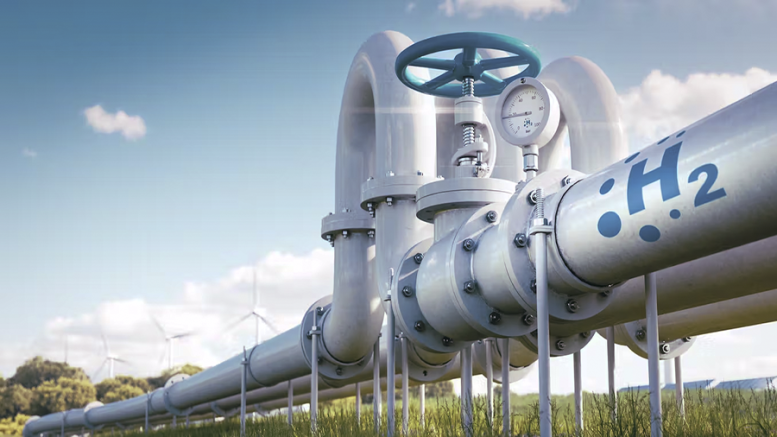As prime minister heading a Coalition government, Malcolm Turnbull was hostage and unable to act on reducing Australia’s carbon emissions. Now he heads the Green Hydrogen Organisation. Hydrogen as an alternative to fossil fuels is controversial, because not all hydrogen is the same. That produced by fossil fuels is dirty. There are alternatives, which produce far less carbon dioxide or none at all. Turnbull writes (The Guardian 17 August 2023) about this. In doing so, he alerts to the need for more research on better hydrogen options and controls to ensure timely progress to zero emissions, and that this should be on the agenda of the COP 28 talks due later this year in Dubai. Turnbull’s argument is part of the debate for the road to clean energy.
Today we use nearly 100 million tonnes of hydrogen as a feedstock for chemicals and fertiliser production worldwide. The problem with this is that this so-called grey hydrogen is produced from fossil fuels. Around a billion tonnes of carbon dioxide emissions each year are associated with this hydrogen production, equivalent to approximately 2 percent of global emissions.
With demand for hydrogen set to grow up to six-fold in the decades ahead, everyone agrees that the production of grey hydrogen has to stop.
The good news is that it is possible to produce hydrogen using little or no emissions. That hydrogen can then be used as an alternative to fossil fuels in other heavily polluting industries such as steelmaking, shipping or aviation. The bad news is that the notion of “clean” or “low carbon” hydrogen has become ubiquitous and a subtext for promoting fossil-fuel derived hydrogen with emissions which are still too high for our planet to cope with.
What is hydrogen energy? And what’s the difference between blue and green hydrogen?
What is hydrogen energy? And what’s the difference between blue and green hydrogen?
In this scenario grey hydrogen is replaced with blue hydrogen, meaning that the carbon emissions from gas or coal used in its manufacture are captured and stored.
At the moment, there is not much blue hydrogen out there. It is expensive and neither captures enough CO2 nor sufficiently minimises the leakage of highly polluting methane. Unless it is held to rigorous emission reduction requirements it has no place in our clean energy future.
There is an alternative to fossil fuel based hydrogen, which is renewable electrolytic green hydrogen, produced using water and renewable electricity. By using wind, sun or hydropower to produce hydrogen, an energy supply chain is created with very low emissions.

Combining clean hydrogen production with renewable energy may be one part of a clean economy with carbon free transport
The Green Hydrogen Standard places an upper limit of 1kg CO2e per kg hydrogen produced and the plan is to lower this limit further. Green hydrogen also offers energy security and price stability advantages to consumers.
The UN Climate Change Conference in the United Arab Emirate at the end of the year will be a watershed moment in the fight against climate disaster. Actions will be critical, and so too is the need to build credibility and trust in paths aligned with a 1.5 degree world. COP28 starts with a trust deficit, because of its strong ties to the oil and gas industry.
The International Energy Agency, International Renewable Energy Agency and UN Climate Change High-Level Champions say that hydrogen production routes “will need to achieve verifiable low-carbon intensities that trend towards near zero by 2030.”
While this statement stops short of setting a rigorous threshold today, it is a clear call for carbon dioxide and equivalent emissions from hydrogen production to reach near zero by the end of the decade.
If supporters of blue hydrogen want to be part of the solution, they need to get behind this statement. If blue hydrogen meets this high standard then it has a role to play. Norway’s Equinor claims it can produce blue hydrogen with just 0.6kg CO2e per kg hydrogen under certain conditions but this needs to be proven in the real world.
As chair of the Green Hydrogen Organisation, I know it is dedicated to renewable green hydrogen, made with genuinely low carbon emissions.

As our industry grows from almost nothing today, we will struggle to compete with fossil fuel hydrogen unless strict emissions limits are set. We cannot afford to play footloose with this key part of the energy transition. We call for an end to any talk of undefined “clean” or undefined “low carbon” hydrogen.
Standards, certification, taxation or support schemes which do not include a credible emissions limit for hydrogen production must end.
At the COP28 we need to rally behind all hydrogen trending towards near zero emissions by 2030. The race is on. We have six years to get grey hydrogen out of our energy system and replace it only with truly clean hydrogen.


While our Hydrogen Generation needs to be green, there are a few sticking points to using it to replace fossil fuels.
1) Existing pipelines cannot be used to transport hydrogen. Hydrogen makes most metals brittle as well as a number of popular plastics. It would be cheaper to replace the gas pipeline infrastructure than try to coat the inside of all the pipes and valves. Replacing the current gas pipeline infrastructure will be more costly than the NBN.
2) For cars, as a combustible fuel to replace petrol, diesel and LPG, simple physics means that a tank the size of an LPG tank will only store enough H2 for 1/7th the range of LPG (yes, the tanks would need replacing as well). Hydrogen does not compress well (it cannot be liquified under the conditions we find in car gas tanks. A tank of hydrogen holds 7 times less energy than the same sized tank of LPG.)
3) It could be used for a fuel cell, but storage is still an issue and I have never seen the equivalent of MPG or L/100km for fuel cell devices.
4) Not withstanding the above restrictions, Hydrogen can be used for large stationary engines, giant cargo ships and, possibly, as a fuel replacement for diesel-electric goods trains and some large trucks ( for range and efficiency, these latter two can be the equivalent of PHEVs)